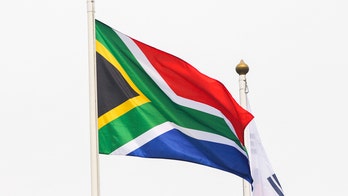A sudden cold front has gripped parts of South America, bringing unseasonably frigid temperatures to Chile, Argentina, and Paraguay. The cold snap, the result of a succession of polar air masses moving over southern swaths of the continent, has broken records along the coast of Chile and in Santiago, the capital.

A dramatic shift in weather has descended upon South America, with Chileans bundling up for their coldest autumn in over 70 years. Just days after basking in warm temperatures, a sudden cold front has brought bitterly cold wind chills to parts of the continent unaccustomed to such harsh conditions this time of year.
Temperatures have plummeted along the coast of Chile and in Santiago, dipping near freezing and making this month the coldest May the country has seen since 1950, according to the Chilean meteorological agency. Meteorological experts attribute the unusual weather to a succession of polar air masses that have swept over southern portions of South America, pushing the mercury well below zero Celsius (32 Fahrenheit) in some places.

This extreme weather event is the latest in a series of climate-related phenomena affecting the region. Currently, Mexico is sweltering under a heat wave, while Brazil is experiencing heavy rainstorms due to the collision between the cold front from Antarctica and warm air from the Amazon.
"The past few days have been one of the longest (cold fronts) ever recorded and one of the earliest ever recorded" before the onset of winter in the Southern Hemisphere, said Raul Cordero, a climatologist at Santiago University. "Typically the incursions of cold air from the Antarctic that drive temperatures below zero occur from June onwards, not so much in May."
The government of Chile has issued frosty weather alerts for most of the country and has stepped up assistance for homeless people struggling to survive the frigid temperatures on the streets. Snow has blanketed the peaks of the Andes and fallen in parts of Santiago, leading to power outages in many areas.
"Winter came early," said Mercedes Aguayo, a street vendor selling gloves and hats in Santiago. She expressed gratitude for the increased demand for her goods after Chile's record-breaking winter heat wave last year, which experts attributed to climate change and the cyclical El Niño weather pattern.
"We had stored these goods (hats and gloves) for four years because winters were always more sporadic, one day hot, one day cold," Aguayo said.
The cold snap has also taken parts of Argentina and Paraguay by surprise, with energy demand soaring across Argentina. In order to prevent household outages, distributors have cut gas supplies to dozens of businesses and industries in several provinces.
This extreme weather event has once again highlighted the vulnerability of South America to climate change and its potential to disrupt lives and infrastructure. As scientists continue to study the long-term effects of climate change, it is becoming increasingly clear that the region will need to adapt to a new reality of more frequent and severe weather events.










